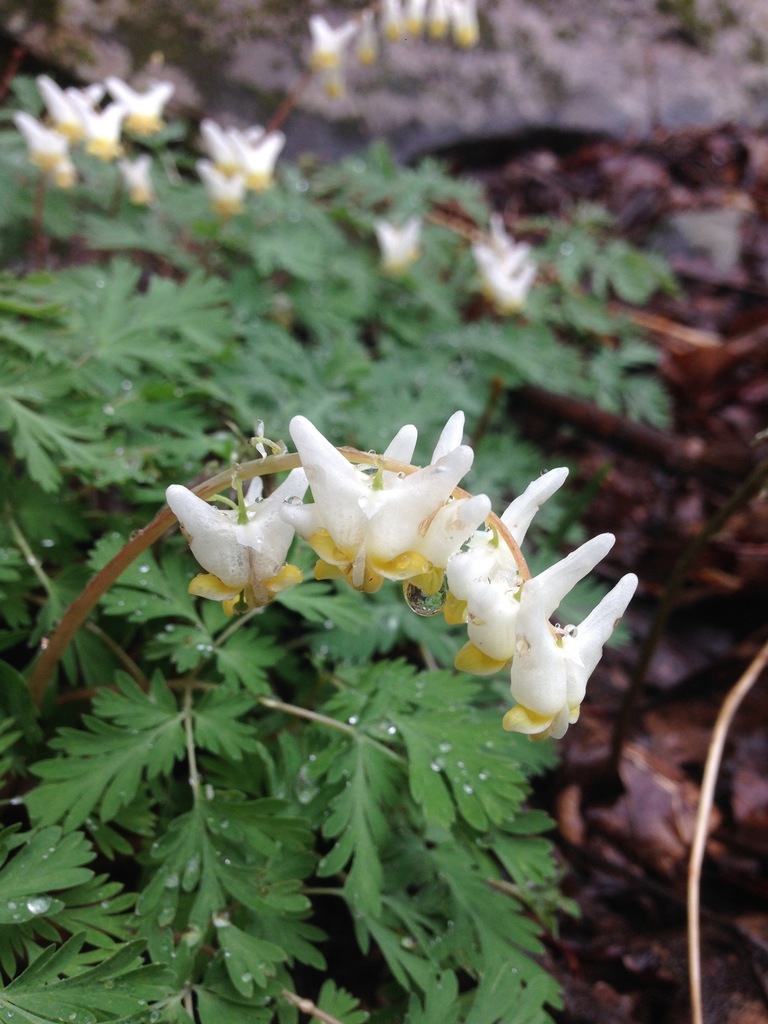
Blooming Dutchman’s Breeches (Dicentra cucullaria) enjoying a misting of spring rain / © Nathaniel Sharp
By Nathaniel Sharp and Kent McFarland
In April the northern forest is laid bare with cold desire. Our long dormant senses awaken. The sweet smell of soil rises to our nose. As the soil warms, Streptomyces bacteria spew chemical weapons against other bacteria, which to us have a distinct earthy smell. Our ears cock skyward at dusk as a Woodcock chatters and twitters across the sky. Spring Peepers burst forth in the evening with up to 4,000 peeps an hour. Blades of wild leeks slice through the soggy, brown remains of autumn to release sweet-onion perfume. Bright white Hepatica opens for wild bees and provides a feast for our eyes. Returning Tree Swallows dance over ponds and marshes. April leaves none of our senses void. Here’s our guide to some of the joys of April.
After a Long Winter Nap, Butterflies Take Flight
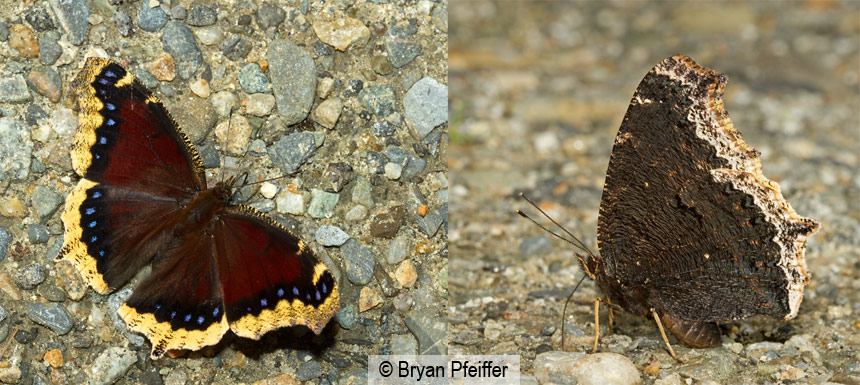
Mourning Cloak (Nymphalis antiopa) / © Bryan Pfieffer
Yes, we know that we promised you Mourning Cloaks, Eastern Commas, and other early butterfly flights last month, but alas, no one reported any to the Vermont Atlas of Life on iNaturalist or e-Butterfly. It’s possible some did indeed crawl from their winter hibernacula and fly in March, although the cold weather and snowfall likely pushed back their emergence. But as temperatures rise and the sun brings warmth to the forests, we should be seeing more and more of these early spring gems. No butterflies have been reported yet in March, but you can keep track of butterfly sightings on e-Butterfly.org and post photos of your first butterfly of spring to help us track their phenology. Fear not, no matter your location, there’s likely adult butterflies near you waiting, perhaps more patiently than you, for a warm spring day.
Wild for Wildflowers
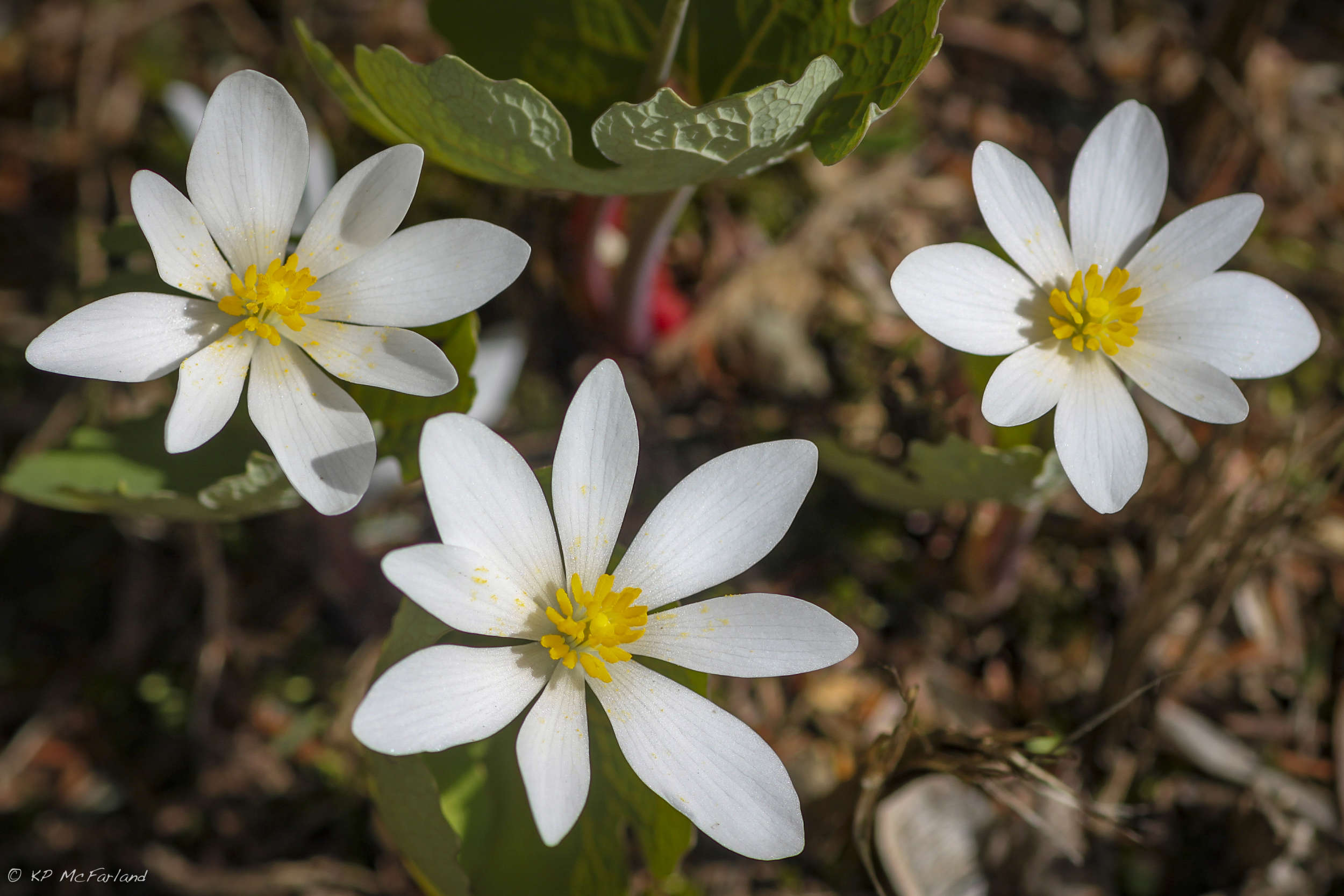
Bloodroot (Sanguinaria canadensis) in full April bloom. / © K.P. McFarland
Spring seems to really “spring” at a slightly different time each year. Sometimes the peepers are calling in late March, other years they remain silent until late in the first week of Spring. The timing of signs of spring, like the blooming of wildflowers and the peeps of spring peepers, can depend on everything from latitude to microclimate. In recent years, a trend towards earlier springs is starting to take shape, and one of the best ways to track these changes is by paying attention to phenology.
Phenology, the study of the timing of natural events such as migration, flowering, leaf-out, or breeding, is key to examining and unraveling the effects of climate change on ecosystems. Assessing the overall trend towards earlier springs involves data collection all across Vermont and beyond. Luckily, this data collection can be as easy as photographing the wildflowers in your backyard! Using your camera or smartphone and the iNaturalist app or website, you can document the time and location of spring ephemeral wildflowers wherever you find them. With the help of the Vermont Atlas of Life on iNaturalist, you can even learn to identify species you haven’t seen before!
Spring ephemeral wildflowers are perennial woodland plants that sprout from the ground early each spring, quickly bloom, and seed before the canopy trees overhead leaf out. Once the forest floor is deep in shade, the leaves wither away leaving just the roots, rhizomes and bulbs underground. It allows them to take advantage of the full sunlight levels reaching the forest floor during early spring. Some spring ephemerals to be on the lookout for this April include Trout Lily, Red Trillium, Bloodroot, and Marsh Marigold.
Long-term flowering records initiated by Henry David Thoreau in 1852 have been used in Massachusetts to monitor phenological changes. Record-breaking spring temperatures in 2010 and 2012 resulted in the earliest flowering times in recorded history for dozens of spring-flowering plants of the eastern United States.
Help Monitor Wildflower Phenology
We have the opportunity to start long-term monitoring across Vermont. Find a plot to monitor in a forest near you or simply record the status of spring wildflowers you find. You can enter your observations on our site at the Vermont Atlas of Life on Naturalist. Please include a photograph(s) of the plant and select from ‘Flowering’, ‘Fruiting’, or ‘Budding’ in the plant phenology section each observation.

Bloodroot phenology from iNaturalist Vermont. flowering (blue), fruiting (orange), and stage not noted (gray). Add your observations too!
Spring Songsters
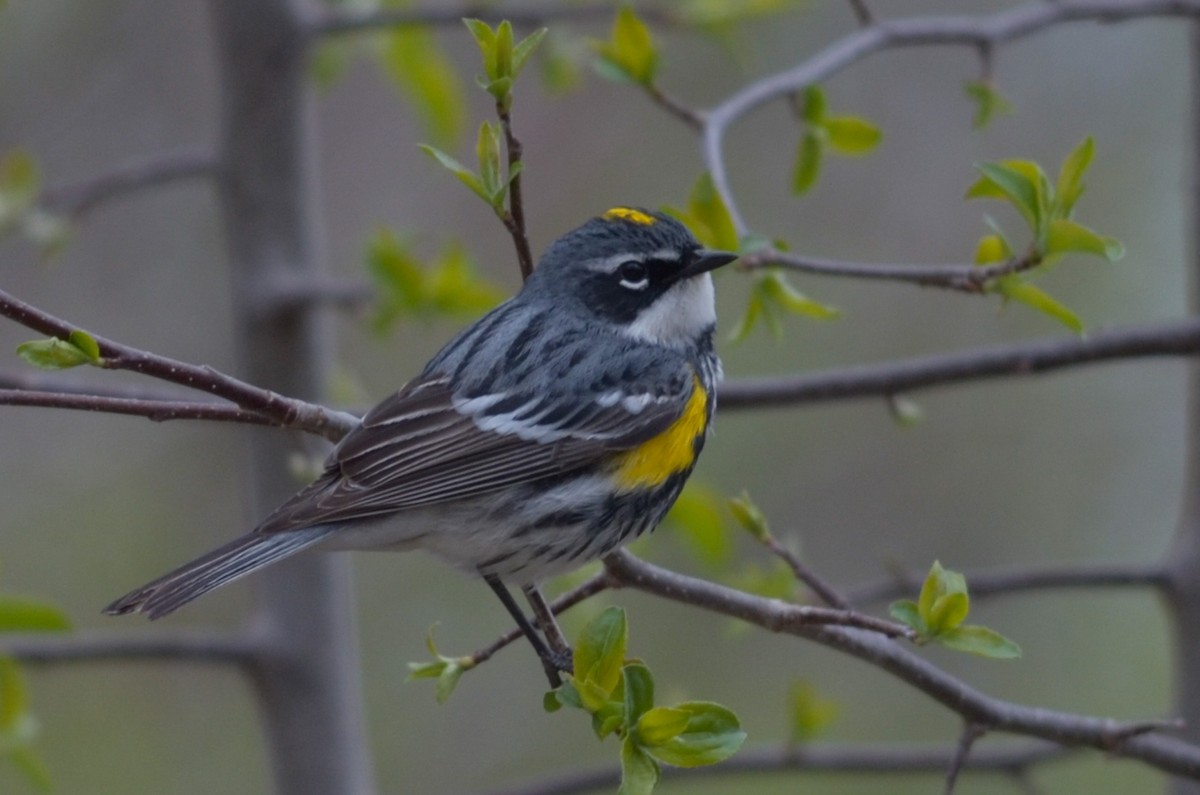
A Yellow-rumped Warbler (or ‘butterbutt’ depending on who you ask) perches among freshly sprouted spring leaves. / © Nathaniel Sharp
Last month you may have been lucky enough to hear the muffled songs of hesitant Black-capped Chickadees, Northern Cardinals, or Song Sparrows. These half-hearted chirps and warbles can be heard on the rare warm day of March, but April is when the migration floodgates truly open. Red-winged Blackbirds arrive and conk-a-ree from every melting marsh, and Northern Cardinals and Song Sparrows seem to have gained new confidence in their singing abilities.
You may soon here the charming Peent of the American Woodcock and, if you are lucky, witness the amazing spectacle of its dance. Known by names like “Timberdoodle” and “Bogsucker”, this bizarre looking shorebird spends its early spring days in fields and open lands wet with winter’s melt. Males will choose a displaying territory and participate in elaborate courtship displays involving descents from death-defying heights and musical trilling produced by specialized wing feathers, all in the name of attracting a mate. Join Outdoor Radio and the Mad River Birders on their evening woodcock walk.
Once trees have budded, but before they have fully leafed-out, you have your best shot at spotting migratory songbirds like warblers, vireos, and the aptly named Ruby-crowned Kinglet in the treetops. Arriving in mid- to late-April, these birds enjoy a buffet of recently emerged insects before settling down into a territory or continuing on their journey north. Submit your bird sightings to Vermont eBird and feel free to include photos and comments of your first robin, warbler, or woodcock of spring! This phenological information, just like blooming times of flowers, can be very useful in tracking shifts in migratory timing of birds in response to climate change.
Synchronized Swimming
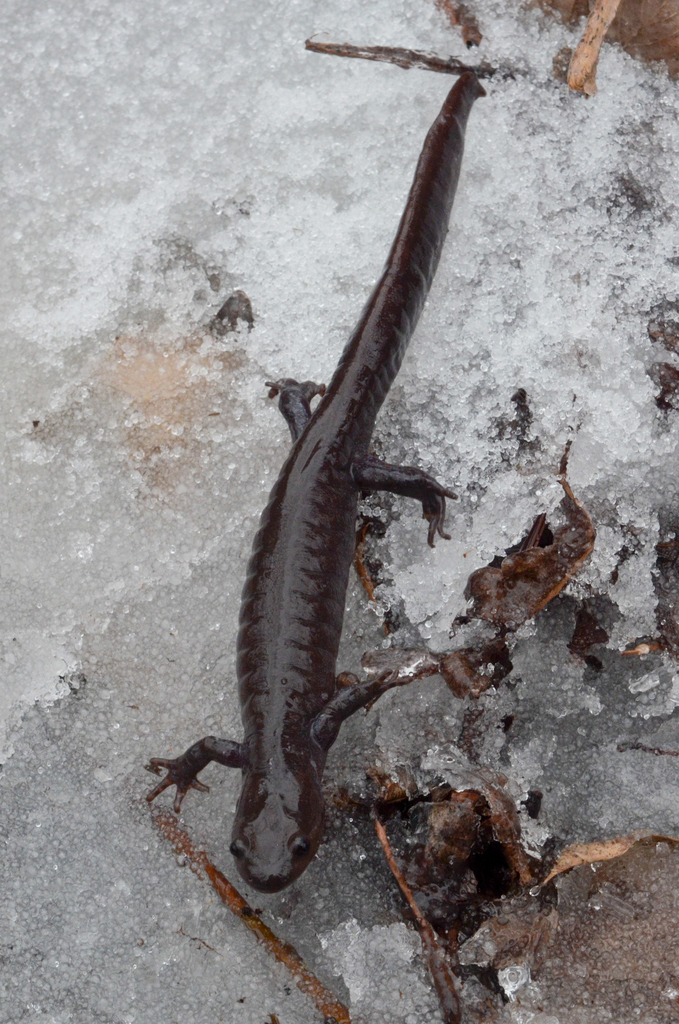
A Jefferson’s Salamander marches over ice, snow, and slush to become one of the first to arrive at its vernal pool. / © Nathaniel Sharp
On warm, wet nights, when temperatures rise above the threshold of 40 degrees and the ground is moist with early spring rain, thousands of Vermont’s amphibians begin their annual march to their breeding pools. The stars of the show are colorful Spotted Salamanders the size of your hand, Wood Frogs that have emerged from their winter deep-freeze, and Spring Peepers preparing to join a deafening chorus of their compatriots. More uncommon, lesser-known species such as Jefferson’s, Blue-spotted, and Four-toed Salamanders also are moving during this time of year.
Male Spotted Salamanders leave their hibernation burrows ahead of the females and arrive first at the pools. They form large balls of wiggling males called congresses. As females arrive, individual males separate from the congress and perform a courtship dance with a female. They circle and put their heads under each other’s tails. The male may climb on her back and rub her with his chin. He then swims away wiggling his tail. If the female is interested, she will follow him. He leads her to a sperm packet, called a spermatophore, he deposited earlier on submerged leaves or twigs on the bottom of the pool. She picks up a packets through her cloaca, an opening under the base of the tail used for egg-laying, excreting waste, and of course egg fertilization. The female may collect packets from several males. She then lays several hundred eggs in small gelatinous balls.
Grab a headlamp and your raincoat and go out and witness this magical dance at a vernal pool near you. You can learn where vernal pools might be, and report any you find, to our vernal pool project.
Migrant Dragonflies Arriving at a Pond Near You
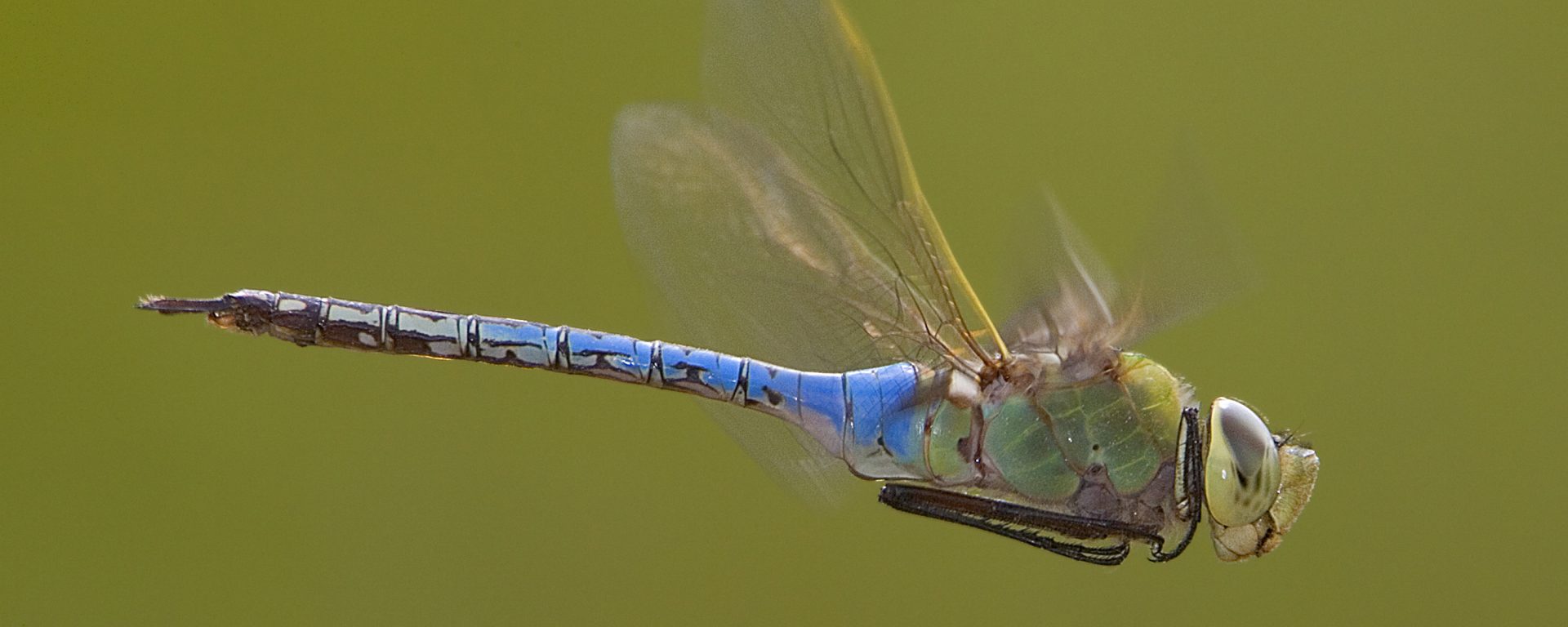
A Common Green Darner in flight. / © Mark Chappell
A mere three inches long and weighing just four-hundredths of an ounce, it’s sailing on four wings thousands of feet in the air. With little fanfare, it struck northward. This Common Green Darner dragonfly is following spring north and it will likely be the first dragonfly you see this April in the Northeast. Of North America’s over 330 dragonfly species, only a few regularly migrate.
Dragonfly migrations have been observed on every continent except Antarctica, with some species performing spectacular long-distance mass flights. A dragonfly called the Wandering Glider is the long-distance champion, making flights across the Indian Ocean that cover twice the distance of Monarch butterfly migrations.
North America’s most abundant and widespread migrant dragonfly is the Common Green Darner. In the spring, just after the ice has disappeared from the ponds, they suddenly appear, well before any local dragonflies have emerged. They breed soon after arriving, and their nymphs develop quickly in water warmed by the spring and summer sun. Many adults emerge from the ponds in August. They feast on insects to pack on fat, perhaps increasing their weight by up to a third. But instead of breeding at their natal site, they begin a southward migration in autumn that may span a month or even longer.
Migrating only during daylight hours, as far as we know, Green Darners can fly more than 60 miles a day with favorable tailwinds. When the winds turn against them, they stop, sometimes for several days, to dine on mosquitoes, gnats, flies and other insects until the winds urge them onward.
Riding on hot winds from the south, the first Common Green Darners tend to arrive on Vermont ponds as early as mid-April. A few of these dragonflies may have come from as far away as the Yucatan peninsula in Central America or one of the islands in the Caribbean, over 2,000 miles away, while others were perhaps from as close as coastal North Carolina. Their young will take advantage of ample water and prey in the pond and journey back southward before the ponds are locked tight by ice.
Using citizen science data and stable hydrogen isotopes, VCE scientists, along with colleagues at the University of Maryland and Smithsonian Conservation Biology Institute have provided insight into the timing of the Common Green Darner’s migratory cycle. Completed in three generations, the cycle begins in the southern US in February, where one generation begins its migration to northern climes, arriving and mating in spring. A second generation completes the southward migration, and there is even a non-migratory generation that spends its entire life in the southern US, the Caribbean, or in Mexico. To learn more about this fascinating long-distance migration, see VCE’s recent blog post about this research.
With over 300 million years of evolution behind them, about twice as long as birds, dragonflies have been flying around the globe for a long time. Add your sightings to the Vermont Atlas of Life on iNaturalist and help us track their spring arrival.
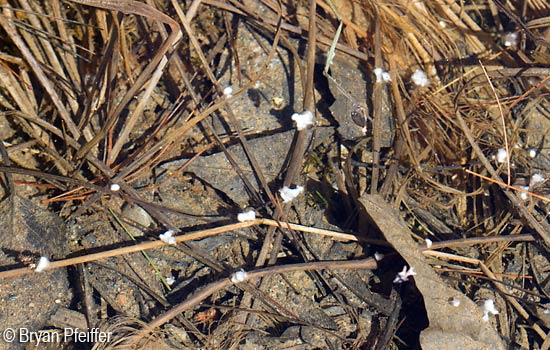

Kent and Nathan,
Nice writing and very informative. Thanks.